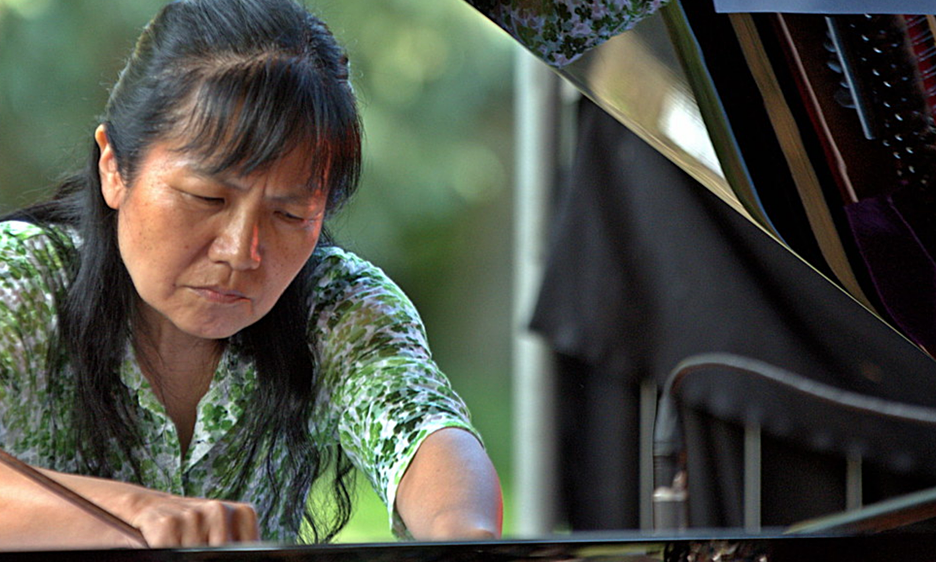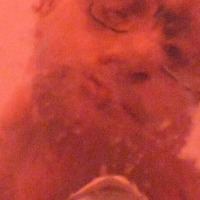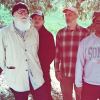Home » Jazz Articles » Live Review » Citadelic 2019
Citadelic 2019

Citadelpark
Gent, Belgium
May 29-June 2, 2019
Free jazz with free admission. That's the appealing concept of the five-day Citadelic festival, which presents jazz, improvisation and other adventurous sounds, from around noon until around 10pm, in a continuous schedule that roams several dips and mounts, or caves and corners, of the sprawling Citadelpark in the beautiful Belgian city of Gent. El Negocito record label director Rogé Verstraete is given the keys to the gates every year, taking advantage of this greenery freedom, and seemingly enjoying complete artistic control. Usually, if free events are to be found in park surroundings, there's some overbearing commercial popularity at play, so it's very exciting that Citadelic offers the music that we might normally experience in a bare loft, a dank cellar, a back room of a bar, or maybe a converted slaughterhouse. It's a revelation to absorb freedom sounds in the sunstruck open air, with grass, leaves, trees and gentle breezes. Improvised music acolytes are so often accustomed to hearing their fave artists down in a windowless dungeon.
This year's Citadelic basked in a varied selection that mixed high profile international guests with players well-known on the Belgian scene, or even specifically local to the Gentian heart. Openly recognisable jazz structures shuffled time with electronic noisemaking, sheer abstraction skirted around vocal song, narrative content infiltrated suspended sonic attacking. Whichever manifestations rose up during a particular set, this was music that was probably going to have strong appeal to the gathered audience, which began the day lightly, then multiplied for the climactic evening sets.
The first day opened with a duo, Ben Sluijs (alto saxophone) and Erik Vermeulen (piano), beginning gently with introspective sounds that untangled sensitively across the green environs. The main stage had a makeshift café bar to its side, with tables and chairs spread across the natural dip that formed the listening area. The pair wandered inside their own malleable time-path, sometimes glancing against each other, and then capering off on their own ways. For "Epistrophy" and "Con Alma," they nurtured a spacious sort of swing, gently quirky, and slightly awkward in the airspace. Old acorns in fresh jackets!
Citadelic featured several artists who presented different collaborative sets, working in unfamiliar formations. The NYC duo Talibam! were due to start early with a core set, but sticksman Kevin Shea had railway problems, so keytar maestro Matt Mottel was suddenly forced into solo mode. This was no bad result, as this was quite a rare chance to catch one of his far-ranging improvised expeditions, planting down layers on beats, topped by a degraded, rough-hewn solo line, with bent psychedelics, warbling and vibrating. Aided by improviser and instrument- maker Cooper-Moore, Mottel has added three strings to his keytar, allowing Eastern trimmings, fed through pedals and boxes. His second section had a repeating figure over which he soloed with an organ sound, getting more conventional with a filmic John Carpenter atmosphere. Then, his next number had a trudging rock'n'roll approach, coupled with a circus acrobatic flipping motion. Just as well that Shea got derailed, so that we could witness this alternative Mottel manifestation!
Another duo became a trio, as a translucent set involving Paul Van Gysegem (bass) and Mathias Van de Wiele (guitar) suddenly sparked with the sudden employment of effects pedals by the latter, completely switching from the serenity. Noah Zackl, a German bassist, joined for an avalanche of plucking, and Van Gysegem picked up an alto horn, soloing whilst the twinned axes continued their weaving.
Besides its improvising abstraction, Citadelic frequently sidles closer to actual jazz, as was the case with the structured set-up of Brandhaard, a quartet that features some of Belgium's key young players, notably its horn front line of Jean-Paul Estiévenart (trumpet) and Steven Delannoye (tenor saxophone). Guitarist Bert Cools used thick fuzz down in the bass regions, and then jarringly switched to making his axe sound like a Norwegian Hardanger fiddle, with his bow and fx. Following a promising start, the band became cumulatively lacklustre, running out of steam before too long, and becoming a touch too self-involved.
Talibam! were now go!, with Shea and Mottel inviting Bart Maris, one of Belgium's best trumpeters, to improvise, generating a prickly heat throughout. Mottel is the anti-Herbie on keytar, flatulating a big bass slackness, which was sometimes too loud for the circumstances. Shea was best heard when Mottel paused, as his drumkit was somewhat subtly amplified, his detailed scuttle now fully revealed. Maris was delicately hot-wired, and the set concluded with him and Shea wandering to face the 'other' way, on their high bandstand location, acoustically resonating, Kevin holding gong in hand.
The evening 'headliner' was The Jeroen van Herzeele Quartet, with their saxophonist leader here found without his extreme electronics table, concentrating more on an overtly post-Coltrane power-push. This had the effect of directing him strongly into a tough tenor role, although one of the set's highlights was an ecstatic rendition of Steve Lacy's "As Usual" (the sopranoman's wife and collaborator Irene Aebi was in attendance during the festival). It was a rolling march, with the extensive pugilist sensitivity of Fabian Fiorini's piano solo, soon to be matched by Herzeele's own searing spotlight.
The Oriel Roca Trio began the second day, this piano/bass/drums unit taking two tunes to move from placid, near stasis, towards a riled-up tension, with fast-tripping solo details rushing out. At the other extreme, playing the final Tuesday set, Peter Brötzmann's Full Blast mostly remained at a similar level of thrust, although their volume level didn't actually require the highest decibel level to emit excitement. This regular trio could manage to cultivate pleasurable tension without actually being ludicrously loud. They delayed their entrance, and it's not so certain how strict the curfew is at Citadelic, but the Full Blast performance was kept within the 45-to-50 minute range, mostly with all three players at, er, full blast. The fuzzed bass of Marino Pliakis was paramount, and Brötzmann stepped forward with his tarogato at one stage. He played a few completely solo spots, and there were also a few bass/drums stretches, but they were mostly all on the run concurrently. The show might have been about 20 minutes over the festival's self-imposed finishing time, but as the uproar was quite contained, the din probably didn't carry too far, and the joy of Citadelpark is that it's stage area is not too close to the surrounding residential zones.
Suura began the Friday with a sensitively drumerless palette, continuing the now-traditional soft entrance to the proceedings. They're a Belgian threesome of Werend Van Den Bossche (alto saxophone), Nicolas Van Belle (guitar) and Emanuel Van Mieghem (bass), the latter bow-droned, to sustain hovering tones, letting textures hang, then tentatively tingling into a spare melody. An appealing ECM restfulness pervaded, coasting and unhurried, imparting a lingering taste. This was a set where birdsong played a significant role, reminding all (as if they needed reminding) that they were indeed in a park. Some ruffled rousing was allowed for the last number, and an organ sound was found inside Van Belle's effects pedals, as Van Den Bossche's perturbed fingerings interrupted Van Mieghem's bowed bass bedrock, allowing a brief veil of darkness to draw across the greensward.
Your scribe had already caught Punk Kong (one of Belgium's finest rising combos) less than a week earlier, at the Brussels Jazz Weekend, and this was one set where this open-sun park location actually worked against a band, dispersing their power, and certainly not being loudly brutal enough. This was probably due to still-potent memories of the previous weekend's stone cellar blow-out, complete with mood lighting and close- quarters tintinnabulation deep down inside the lugholes. The line-up had changed slightly, with one of the three reedsmen being replaced, but this added to the bass saxophone weight. Low-slung, belching power is mostly the orientation of Punk Kong, with its vanguard of baritone and bass horns, plus Greek-import guitarist Giotis Damianidis streaking out psychedelic spatula-strafed tendrils. The tenor is as high as they usually go in the saxophone range. A portentous slink opened, with the guitar much clearer in the mix than on the previous weekend's gig. Teasingly, they introduced a heavy riff, initially adorned with decorous detail. Punk Kong dedicated "There Are Other Roads" to Sun Ra, making a sleazy crawl, this being neon gutter music in stark daylight. Despite the low-belly bias, one of the most ripping solos came out of the secret weapon alto of guesting Irish saxophonist Sam Comerford, followed by a scalding guitar gout, part-Marc Ribot, part-Sonny Sharrock in intent.
The keyboardist Jozef Dumoulin played on the bandstand, his work perhaps most familiar within Warped Dreamer, with drummer Teun Verbruggen. This set teamed up crackling electro-abstraction with a fusion groove sensibility, something that an increasing number of outfits are exploring nowadays. Vocalist Lynn Cassiers was in more free-form mode, also manipulating her electronics gear.
Then, back on the main stage, Spook presented their avant hillbilly approach (a movement that is steadily growing, globally), with pedal steel guitar to the forefront. Filip Wauters is the twangin' man leader, and the trio boasts the great drummer Simon Segers, who also plays with Black Flower and Der Beren Gieren. Bassman Nicolas Rombauts completed the roster, with his reverb coyote howl. The axis tilted towards cosmic jazz, when around ten minutes in, Spook awoke into a more bullish form. As the set progressed, Segers got into his favoured Krautrock repetition groove, finding time to brandish a bean seedpod, as Rombauts locked into an obsessive funkline. Meanwhile, the pedal steel bayed at the moon.
Friday involved a drum summit, using yet another park area. Due to the day's beaming heat, a shaded hillock was found, underneath drooping tree-leaves, with six kits, several heavily augmented by percussive clutter. Some of the globe's most respected improvisers were included, with Paul Lytton and Chris Corsano boasting the most sonic litter, and the Italian-in-Gent Giovanni Barcella representing the local Negocito scene. Oriol Roca (Italy), Marek Patrman (Czech Republic) and Eric Thielemans (Belgium) were also part of the closely woven circle. Time was split between developing grooves and suspended detail, with the finest aspects of jazz and free- forming combined, Lytton and Corsano being notably impressive in their seeking of unusual patterns and surprising textures. It was this informal gathering, almost a secret percussive society, that typified the unexpected outbreaks around Citadelpark, lending this festival its wealth of sonic- influencing locations. Informality bred magnetism.
Kaze played next on the main stage, but the Japanese pianist Satoko Fujii was soon going to go off a-wandering. She was working up to a significant takeover of the park, guiding a massed formation of improvisers, exploring each other in smaller group permutations. But first, the Kaze quartet began with a pair of stippling trumpets, from Frenchman Christian Prouvost and Fujii's husband Natsuki Tamura. Piano muscled in, with heavy, jabbing rolls, and the horns began to knit, steel wool breath pushed hard by Prouvost. We heard some of the most extreme interior piano scrapings of all, but the set ended up dispersing and dithering, eventually losing its momentum. Fujii would certainly regain her powers once the park-wandering improvisation sequence began on Citadelic's final day.
Prouvost and Barcella returned for the next set, a trio with roughhouse bassist Peter Jacquemyn, and the night concluded with a Belgian combo led by cellist Lode Vercampt, featuring reedsman Steven Delannoye and guitarist Artan Buleshkaj. The latter invited a rocky sway, with Delannoye favouring bass clarinet, before switching to his more familiar tenor saxophone. It was a strange dynamic to place such interior music at the height of Saturday night, but such expectations are prey to being confounded at this particular festival.
The last day, a Sunday, presented some of Citadelic's best sounds, led by Fujii's complete improvising colonisation of the park. Prior to that, there was another sort of impact, as the Ago! Benin Brass players opened around noon on the main stage, continuing their set in a mobile state, uniting West African pneumatics with New Orleans romping. Chief organiser Luc Mishalle contributed copious spirited tenor saxophone solos, with the group's three trumpeters competing in the rushes of high note liquidity.
The first Fujii-shaped improvisation featured three pianos, played by two artists. Fujii stuck to her own self-prepared keys, but Seppe Gebruers sat with a piano on each side, specially tuned, and placed in a v-formation. They were joined by bassist Jacquemyn, the sunlight just at such an angle in the natural amphitheatre site that the prodigious golden mote-count was extremely evident, adding a stunning visual element to the music. Some of the motes were tiny living beings. Bowed high-bass partnered very trebly piano trinkles, as the vigorous Jacquemyn issued throat- singing multiphonics, and seedlings drifted down from the surrounding treetops. He had a bow in each hand, and a miniscule baby cricket navigated through your scribe's forearm follicles.
Subsequently, there were sets from players spread out across an interminable concrete flatness, lurking in the park's cave-space tunnel, and also with players situated on high, from amongst the fronds of a higher path, the gathered audience cricking necks to look up at their activities. Trumpet (Prouvost again) and trombone (Samuel Carpentier) cried out fanfare scribbles, the latter with a makeshift frame drum mute, fine spit sounds hanging in the otherwise silent lawn zone, the music possessing a surprisingly vivid delineation, out in the bright-lined sunshine. A rubber mute-flapper was introduced and the pecking increased to a chatter of astoundingly high treble frequencies, with tabla and shawm included amongst the instrument changes made by these players. The climactic amphitheatre set united the complete complement, with Jacquemyn dropping a heavy stone at strategic moments (sculptor that he is), and Takamura stepping in to conduct, providing a closing strategy once the piece was nearing its semi-natural conclusion.
Photograph: Cedric Craps
Tags
Live Reviews
Martin Longley
Belgium
Ghent
Ben Sluijs
Erik Vermeulen
Kevin Shea
Matt Mottel
Cooper-Moore
Paul Van Gysegem
Mathias Van De Wiele
Noah Zackl
Jean-Paul Estiévenart
Steven Delannoye
bert cools
Bart Maris
Jeroen van Herzeele
Steve Lacy
Irene Aebi
Fabian Fiorini
Oriel Roca
Peter Brotzmann
Marino Pliakis
Werend Van Den Bossche
Nicolas Van Belle
Emanuel Van Mieghem
sam comerford
Marc Ribot
Sonny Sharrock
Jozef Dumoulin
Teun Verbruggen
Lynn Cassiers
Filip Wauters
Simon Segers
Black Flower
Der Beren Gieren
Nicolas Rombauts
Paul Lytton
Chris Corsano
Giovanni Barcella
Oriol Roca
Marek Patrman
Eric Thielemans
Satoko Fujii
Christian Prouvost
Natsuki Tamura
Peter Jacquemyn
Luc Mishalle
Seppe Gebruers
Samuel Carpentier
PREVIOUS / NEXT
Support All About Jazz
 All About Jazz has been a pillar of jazz since 1995, championing it as an art form and, more importantly, supporting the musicians who make it. Our enduring commitment has made "AAJ" one of the most culturally important websites of its kind, read by hundreds of thousands of fans, musicians and industry figures every month.
All About Jazz has been a pillar of jazz since 1995, championing it as an art form and, more importantly, supporting the musicians who make it. Our enduring commitment has made "AAJ" one of the most culturally important websites of its kind, read by hundreds of thousands of fans, musicians and industry figures every month.





























